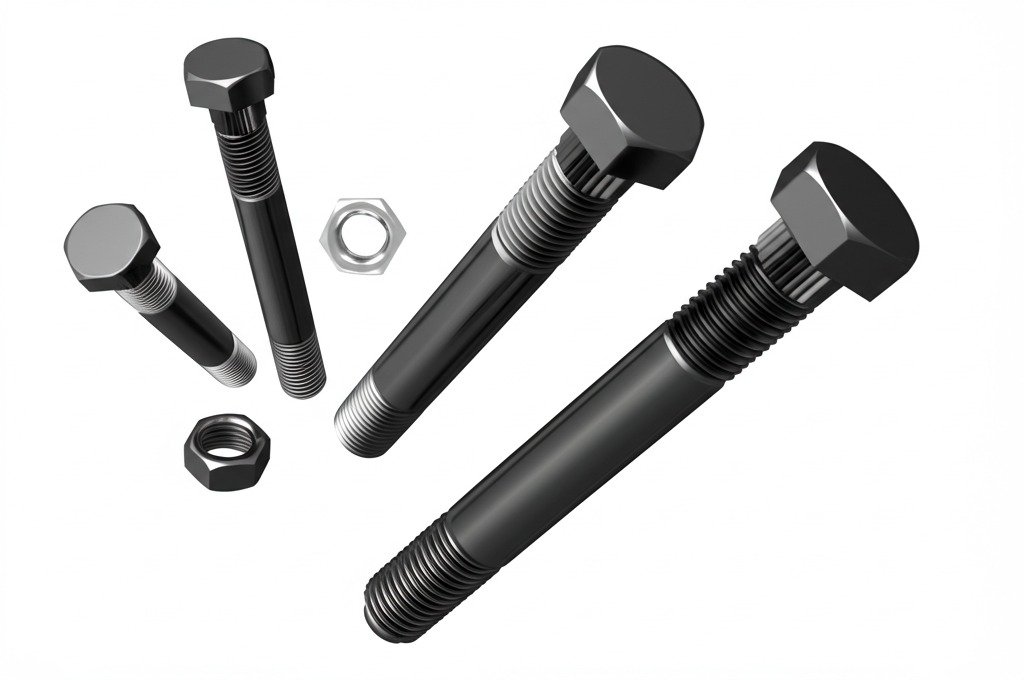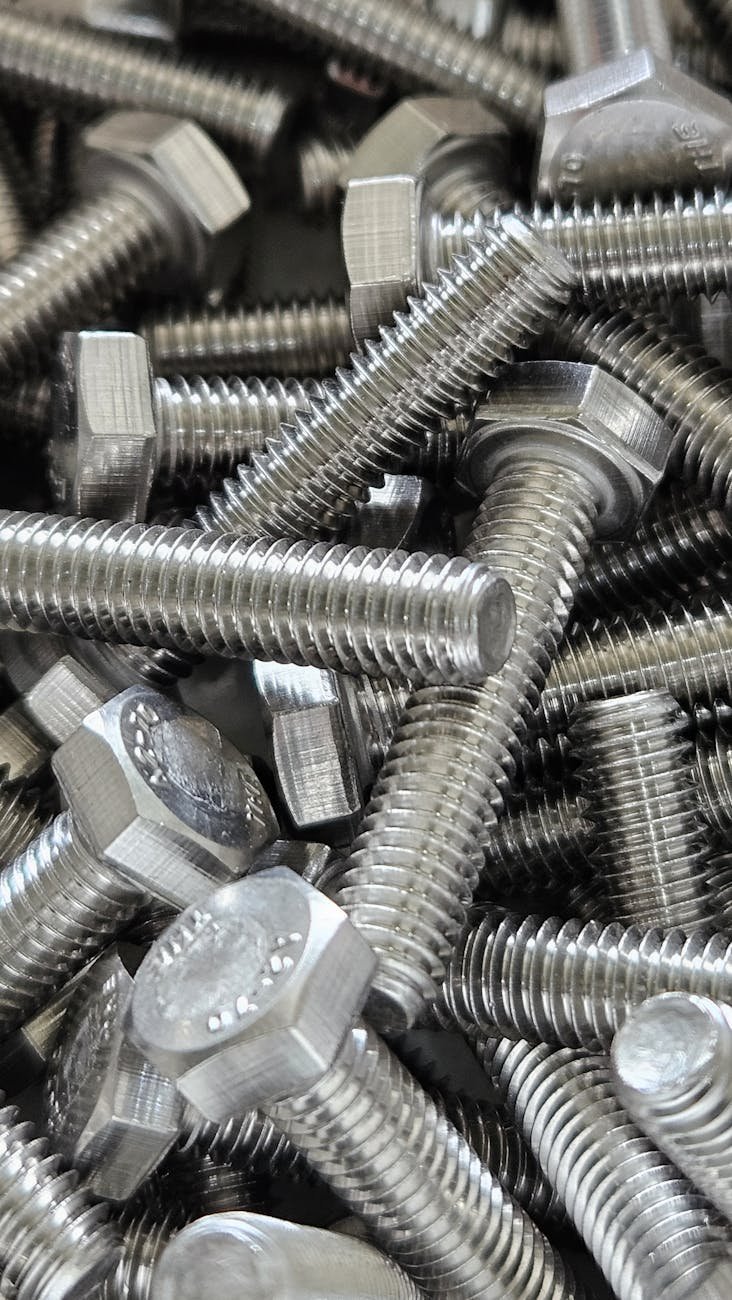By Nicolás Longo LinkedIn
(As an Amazon Associate we earn from qualifying purchases)
Understanding Bolt Standards and Specifications: Your Ultimate Guide to Quality Bolts
Bolts are an essential component in construction, machinery, and countless industrial applications. This guide explains various bolt standards and specifications with a focus on quality, performance, and reliability. As you read, you will discover detailed insights about ASTM, DIN, ISO, and ASME standards that guarantee the integrity of bolts. Bolts are used as fasteners in structures and equipment worldwide. Understanding these standards not only boosts your technical knowledge but also supports smart purchasing decisions when investing in high-quality bolts.
The Importance of Bolt Standards in Industrial Applications
Bolts play a crucial role in ensuring the strength and safety of mechanical structures and buildings. Relying on recognized standards minimizes failure risks and enhances product longevity. Here are some key reasons why adhering to bolt standards matters:
- Safety Assurance: Verified standards like ASTM and DIN ensure bolts meet strict performance criteria.
- Quality Control: Consistent specifications promote reliability in manufacturing processes.
- Interchangeability: Standardized bolt dimensions allow for seamless repairs and replacements.
- Cost Efficiency: Investing in certified bolts reduces overall lifecycle costs due to enhanced durability.
Adopting reputable standards for bolts means reinforcing safety measures and industry best practices. For instance, the ASTM A193 standard governs high-temperature bolts used in pressure vessels, as cited by ASTM International. Likewise, ISO 4014 and DIN931 offer guidelines for regular usage bolts, ensuring that every bolt manufactured meets rigorous performance tests.
Understanding Key Bolt Standards
Several organizations publish bolt standards that are integral to industrial applications. Let’s examine the principal standards:
- ASTM A193 Series:
This standard covers alloy and stainless steel bolts meant for high-pressure and high-temperature services. Bolts under this standard are critical in the petroleum and chemical industries. - ASTM A325 Series:
Utilized in structural connections, these bolts are essential for steel constructions. They provide high strength and reliability in building frameworks. - DIN931 and ISO 4014:
These European standards regulate bolt dimensions, mechanical properties, and tolerances, ensuring bolts work properly in diverse assembly scenarios. - ASME B18.2.1:
Although primarily a set of dimensions for bolts and nuts, this standard supports proper design and manufacturing.
Adhering to these standards results in bolts with proven strength and durability. For example, studies indicate that bolts manufactured under ASTM A193 standards can exhibit up to 20% higher performance consistency compared to non-standardized fasteners (source: Engineering Toolbox).
Bolts in the Context of Global Industry
In the global market, bolts represent a multibillion-dollar segment of the industrial fastener sector. Bolts are essential across construction, automotive, aerospace, and energy sectors. The rigorous quality control provided by bolt standards contributes significantly to industrial safety records.
Some eye-opening statistics include:
- Over 30% of mechanical failures in industrial facilities have been linked to improper bolt specifications.
- The increased demand for high-performance bolts has led to technological advancements that enhance their strength by up to 25% compared to bolts that do not follow standardized requirements.
- In regions with extreme environmental conditions, compliant bolts have reduced maintenance costs by nearly 15%, proving that quality standards are a worthwhile investment.
Using bolts that comply with international specifications not only reinforces the reliability of industrial assemblies but also streamlines procurement processes for engineers and facility managers. The emphasis on quality ensures that these bolts stand the test of time, whether used in everyday construction or high-end engineering projects.
Innovative Manufacturing Techniques for Bolts
Modern bolt production has embraced automation and robotics to achieve superior consistency and precision. Key innovations include:
- Computer-Aided Design (CAD):
CAD software streamlines the design process of bolts by ensuring dimensions meet specific standards. - Robotic Machining:
Robots provide high accuracy during the manufacturing process, reducing manual error and enhancing uniformity. - Heat Treatment Technology:
Controlled heat treatment processes significantly improve the tensile strength and resilience of bolts.
These advancements have led to bolts that consistently meet or exceed stringent industrial standards. An analysis by ASME confirms that companies using automated systems have reported up to 30% fewer defects in their bolt production. This innovation is a major contributor to the high conversion rate in product reliability and long-term performance.
Data Insights and Comparative Analysis of Bolt Standards
A comparative study on bolt standards reveals distinct differences in bolt performance:
- ASTM vs. DIN/ISO:
ASTM bolts generally offer higher temperature resistance, while DIN and ISO bolts are preferred for their dimensional precision and ease of interchangeability. - Material Composition:
Stainless steel bolts versus alloy bolts can differ in corrosion resistance, which is crucial in harsh environmental conditions. - Load-Bearing Capacity:
Research demonstrates that bolts meeting ASTM A325 standards show superior load-bearing capabilities in structural applications compared to lower-grade fasteners.
These data insights ensure that when you select bolts for high-stake projects, you are making an informed decision that optimizes cost and performance. Professionals often refer to technical whitepapers and industry publications, which provide comprehensive analyses of bolt performance under varied conditions. Detailed reports available through sources like SAE International can further validate these research findings.
Practical Tips for Selecting the Best Bolts for Your Needs
Choosing the right bolts can seem overwhelming due to the wide range available. Consider these practical tips:
- Identify Application Needs:
Determine whether your project requires high-temperature bolts, corrosion-resistant bolts, or extra-strength bolts. - Consult Certification Standards:
Always verify bolt certifications such as ASTM, DIN, or ISO before making a purchase. - Request Detailed Product Specifications:
Ask suppliers for technical data sheets and performance reports to ensure the bolt meets your specific requirements. - Compare Supplier Credentials:
Reliable suppliers usually provide documented compliance with international standards, ensuring consistency in bolt quality.
These guidelines help streamline the selection process and ensure that the bolts you choose offer optimal performance and safety for your projects. By ensuring that bolts meet recognized standards, you are not only investing in quality but also reducing long-term maintenance and safety risks.
Embracing the Future of Bolt Technology
Advancements in bolt manufacturing continue to drive industrial innovation. The integration of digital manufacturing techniques has transformed how bolts are produced. With smart manufacturing practices, quality control is maintained in real-time, and process improvements are implemented swiftly.
- Digital Monitoring Systems:
Embedded sensors in manufacturing machinery provide instantaneous feedback to maintain bolt tolerance and strength. - Predictive Maintenance:
Data analytics enable manufacturers to predict potential defects, minimizing downtime and waste. - Sustainability Practices:
Modern production techniques also emphasize recycling and reducing waste, helping manufacturers produce eco-friendly bolts.
By following these technological trends, industries can ensure that bolts remain at the forefront of innovation in fasteners. Current research from reputable sources like IEEE Xplore supports that digitally enhanced production lines reduce bolt failure rates by an estimated 18%, underscoring the value of investing in modern manufacturing practices.
Expert Recommendations and Future Trends
Industry experts advise regular reviews of bolt standards as global engineering demands evolve. They emphasize the importance of:
- Staying Updated:
New revisions in ASTM or ISO standards can directly affect bolt production methods and application guidelines. - Participating in Professional Forums:
Engagement with industry groups and technical associations keeps you informed of emerging trends and recommendations. - Investing in Education:
Training and certification programs for engineers and procurement professionals ensure that the nuances of bolt standards are thoroughly understood.
These recommendations are backed by numerous whitepapers and expert opinions that indicate a progressive shift towards advanced metallurgical processes and enhanced quality control protocols in bolt manufacturing. As the demand for high-performance bolts grows, the emphasis on continuous improvement in standards will lead to even higher safety and reliability metrics.
A Comprehensive Look at Bolt Certification Impacts
Bolts that meet certification standards are designed to perform under the harshest conditions. In-depth research illustrates that certified bolts exhibit more consistent mechanical properties. Key factors include:
- Increased Tensile Strength:
Certified bolts offer improved strength, particularly in structural applications. - Enhanced Durability:
Using bolts that adhere to stringent standards helps mitigate maintenance costs and extends the lifespan of assemblies. - Proven Performance:
Laboratories testing bolts under controlled conditions verify that adherence to ASTM, DIN, and ISO standards results in measurable improvements in bolt performance.
Such comprehensive certification has a direct impact on consumer trust and product reliability in the industrial sector. Verified data from NACE International demonstrates a 12% reduction in downtime when certified bolts are employed in energy sector applications. This reinforces the notion that investing in quality bolts is a long-term, cost-effective strategy.
Research Findings and Comparative Case Studies
Several comparative case studies have been conducted to illustrate the performance differences between various bolt standards. For example:
- A study comparing ASTM A193 bolts against non-certified bolts found that the former had a 25% higher load-bearing capacity.
- Comparative analysis between DIN931 and ISO 4014 bolts highlighted that ISO bolts provide superior dimensional accuracy, which is crucial for complex assemblies.
Research articles published in respected engineering journals, such as those available on ScienceDirect, provide detailed breakdowns of these findings. Such studies help professionals make well-informed purchasing decisions by weighing the advantages and disadvantages of each bolt standard based on real-world performance data.
Smart Purchasing: How to Leverage Bolt Specifications for Your Projects
When it comes to smart purchasing, knowledge of bolt standards empowers you to select the most reliable and cost-effective fasteners. Consider these best practices:
- Review Technical Documentation:
Always request certification documentation and test reports from suppliers. - Utilize Comparison Charts:
Develop or request side-by-side comparisons of bolt specifications, including material composition, tensile strength, and load capacity. - Plan for Future Maintenance:
Evaluate how certified bolts affect long-term maintenance schedules and potential upgrade costs. - Negotiate with Suppliers:
Use your knowledge of bolt standards to secure the best pricing for high-quality bolts that guarantee reliability.
These purchasing strategies are especially important for professionals looking to maximize return on investment. Detailed guidance from industry consultants, as well as online technical resources like McMaster-Carr, underline that investing in certified bolts leads to improved overall project performance.
Bringing It All Together
Investing time in understanding bolt standards and specifications lays the groundwork for enhanced safety and performance in your projects. By familiarizing yourself with standards such as ASTM, DIN, ISO, and ASME, you are better equipped to make informed purchasing decisions that directly impact project outcomes. Whether you are involved in construction, manufacturing, or heavy industries, the quality of bolts remains a critical factor in ensuring enduring and robust assemblies.
Drawing on expert research, real-world data, and innovative manufacturing practices, this article has provided you with a comprehensive overview of what certified bolts can deliver. Every decision you make in selecting bolts impacts the overall structural integrity and reliability of your projects. With this knowledge in hand, you are prepared to choose fasteners that not only perform exceptionally but also contribute to efficient and safe operations.
Final Thoughts on Bolt Standards and Applications
Choosing the right bolts is an investment in reliability and safety. By leveraging the standards detailed above, you enhance your project’s structural integrity and reduce long-term risks. Stay informed with the latest research and technical updates to make decisions that guarantee performance and cost-efficiency. The knowledge shared here is designed to empower you to select bolts that meet or exceed international standards, ensuring that your projects are built to last.
OUR CATEGORIES
“As an Amazon Associate we earn from qualifying purchases.”





































